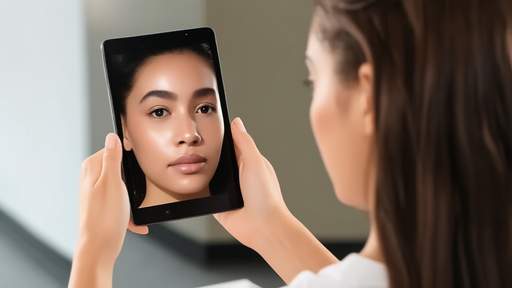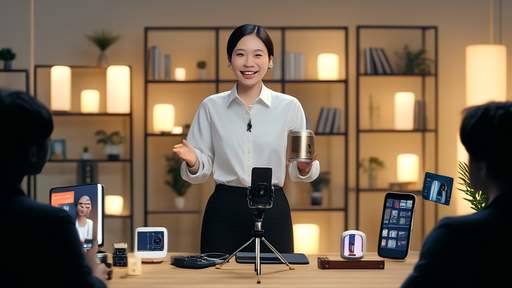The rise of virtual influencers has ushered in a new era of digital marketing, particularly among Gen Z consumers. These computer-generated personalities, often indistinguishable from their human counterparts, are rapidly reshaping brand engagement strategies. As companies scramble to capitalize on this trend, questions arise about how deeply these synthetic ambassadors resonate with young audiences raised on a diet of internet culture and algorithmic content.
Virtual influencers like Lil Miquela and Imma have amassed millions of followers, blurring the line between reality and simulation. Their flawless appearances and carefully curated lifestyles present an aspirational aesthetic that traditional influencers struggle to maintain consistently. For brands, this represents both an opportunity and a challenge - while virtual idols never tire, get canceled, or age poorly, their very perfection might create an uncanny valley of consumer trust.
The psychology behind Gen Z's acceptance of virtual spokesmodels reveals fascinating contradictions. Having grown up with digital natives like Hatsune Miku and vocaloid culture, this demographic displays surprising comfort with synthetic personalities. Yet their much-discussed "authenticity radar" presents a paradox - how do they reconcile their demand for realness with their embrace of obviously artificial brand ambassadors?
Commerce platforms report conversion rates from virtual influencer campaigns that often outperform human influencers in specific product categories. Particularly in gaming peripherals, tech gadgets, and digital fashion, these CGI personalities demonstrate remarkable persuasive power. Their ability to seamlessly integrate products into their virtual worlds creates a fantasy consumption scenario that resonates powerfully with young digital natives.
Cultural differences in acceptance levels present intriguing regional variations. Asian markets, particularly Japan and China, show significantly higher engagement with virtual influencers compared to Western audiences. This likely stems from longer exposure to virtual idol culture through anime, vocaloids, and mobile games. The avatar economy in these regions has matured to the point where virtual influencers routinely sign seven-figure endorsement deals.
The environmental argument for virtual influencers presents an interesting selling point for eco-conscious Gen Z consumers. Unlike human influencers who travel extensively for content creation, their digital counterparts leave no carbon footprint from flights or photoshoots. Several sustainability-focused brands have successfully leveraged this angle, though critics argue it's greenwashing when the energy costs of maintaining the necessary tech infrastructure are considered.
Emerging technologies are rapidly closing the "creepiness gap" that once limited virtual influencer effectiveness. With advances in real-time rendering and AI voice synthesis, the newest generation of digital personalities can engage in live streams and limited two-way interactions. This enhanced interactivity appears crucial for maintaining Gen Z engagement, as passive content consumption no longer satisfies this demographic's expectations for participation.
The phenomenon of "para-social relationships" takes on new dimensions with virtual influencers. Without the scandals and personal drama that plague human celebrities, these synthetic personalities offer risk-free emotional investment for fans. Brand managers report that Gen Z consumers often develop surprisingly intense attachments to virtual spokescharacters, though these relationships lack the complexity and reciprocity of human connections.
Looking ahead, the virtual influencer market shows no signs of slowing its expansion. As generative AI tools become more sophisticated and accessible, we're seeing an explosion of hyper-localized virtual personalities catering to niche interests. From virtual sneakerheads to digital makeup artists, these specialized influencers demonstrate remarkable conversion rates within their targeted micro-communities.
Ethical concerns linger beneath the surface of this marketing revolution. Psychologists debate the impact of promoting unrealistic beauty standards through literally flawless digital beings. There's also growing scrutiny around disclosure requirements, as many young consumers report difficulty distinguishing between human and virtual influencers at a glance. Regulatory bodies in several countries are beginning to develop specific guidelines for this emerging advertising medium.
The most successful virtual influencer campaigns cleverly leverage their artificial nature rather than disguising it. Brands that embrace the surreal possibilities of digital spokesmodels - having them defy physics, morph into products, or exist in impossible environments - report significantly higher engagement than those attempting to pass them off as "real." This suggests Gen Z consumers prefer fantastical honesty over synthetic realism in their marketing content.
As the technology progresses, we're seeing the first wave of consumer-created virtual influencers enter the marketplace. User-friendly avatar creation platforms allow Gen Zers to design and monetize their own digital personalities, further blurring the lines between consumer and content creator. This democratization could fundamentally alter the influencer marketing landscape in coming years.
The longevity of virtual influencers presents both an advantage and a challenge. While they never age out of relevance, maintaining audience interest over extended periods requires continuous evolution. The most successful virtual personalities undergo regular "software updates" to their appearance, backstory, and capabilities - a phenomenon with no parallel in human influencer management.
Surprisingly, virtual influencers are developing crossover appeal beyond their Gen Z base. Millennial audiences, particularly in the 25-34 demographic, are showing increased engagement with digital spokesmodels, especially for nostalgia-driven campaigns featuring retro gaming or anime aesthetics. This suggests the virtual influencer phenomenon may have broader staying power than initially anticipated.
As we stand at this marketing crossroads, one truth becomes clear: virtual influencers aren't replacing human creators, but rather expanding the spectrum of brand communication. The most forward-thinking companies are developing hybrid strategies that leverage the strengths of both. For Gen Z consumers raised on a media diet that freely mixes reality and simulation, this blended approach appears most resonant of all.

By /Jun 3, 2025

By /Jun 3, 2025

By /Jun 3, 2025

By /Jun 3, 2025

By /Jun 3, 2025

By /Jun 3, 2025

By /Jun 3, 2025

By /Jun 3, 2025

By /Jun 3, 2025

By /Jun 3, 2025

By /Jun 3, 2025

By /Jun 3, 2025

By /Jun 3, 2025

By /Jun 3, 2025

By /Jun 3, 2025

By /Jun 3, 2025

By /Jun 3, 2025

By /Jun 3, 2025

By /Jun 3, 2025

By /Jun 3, 2025